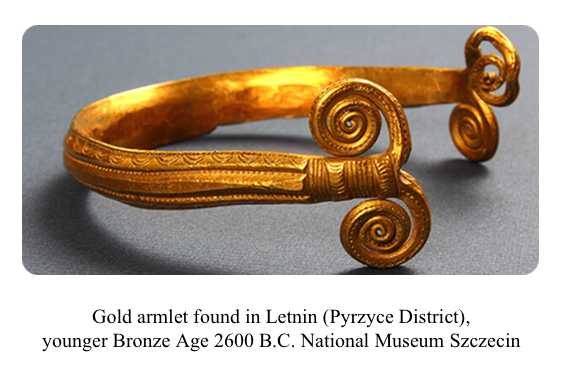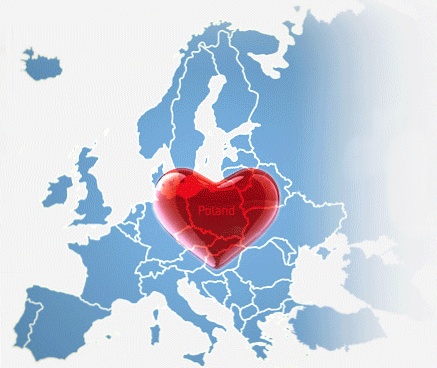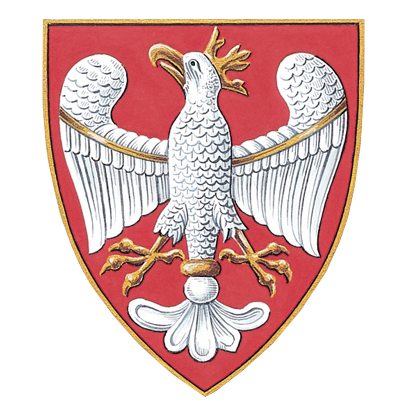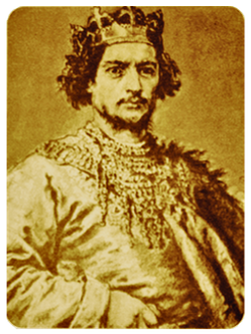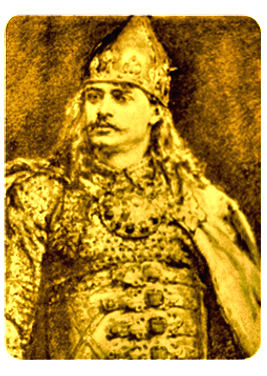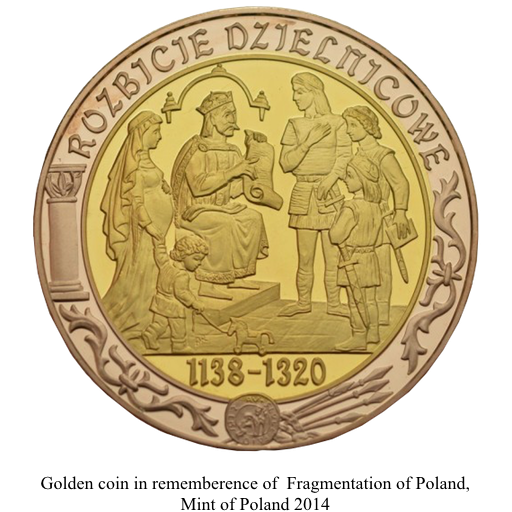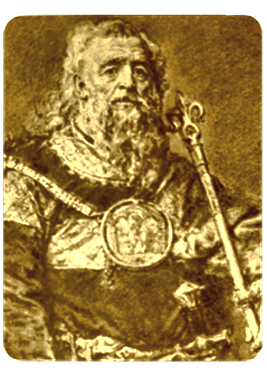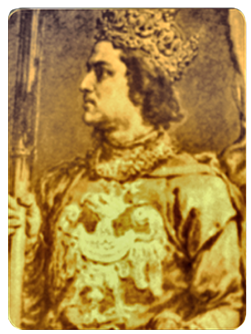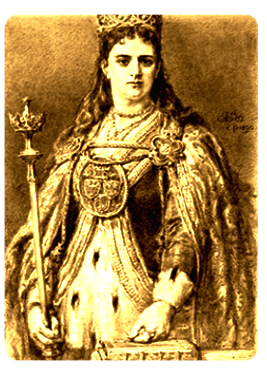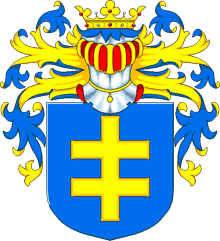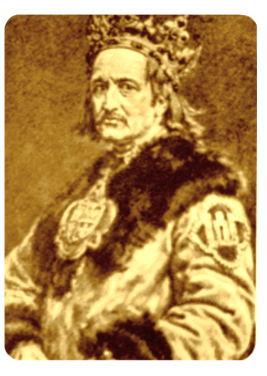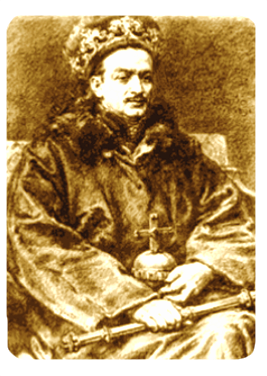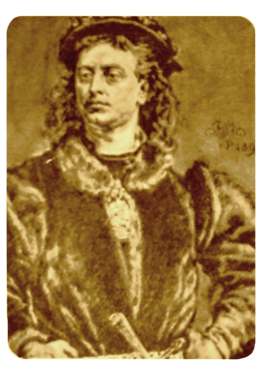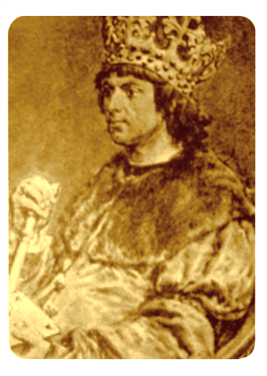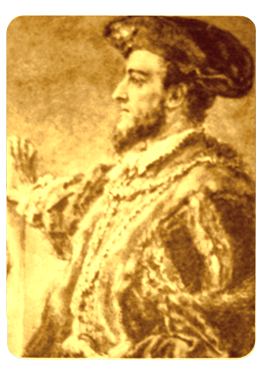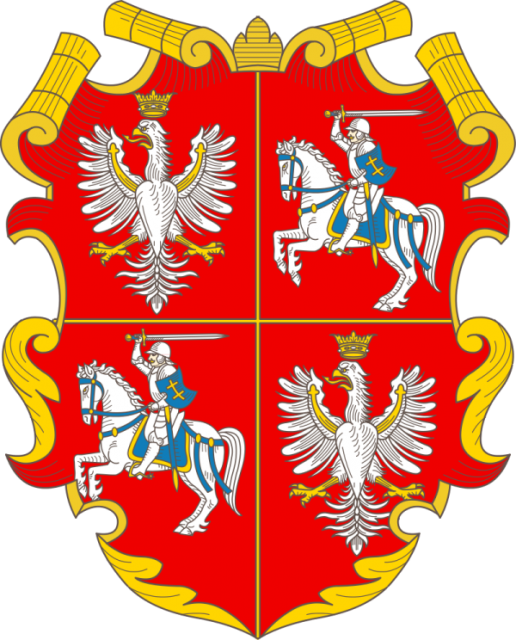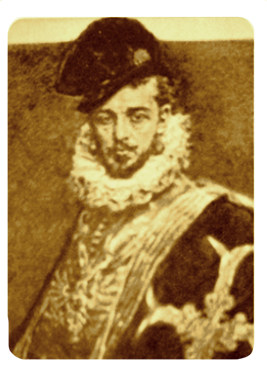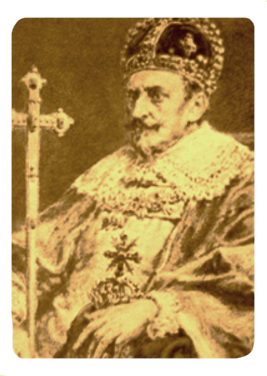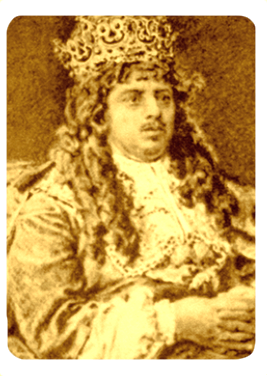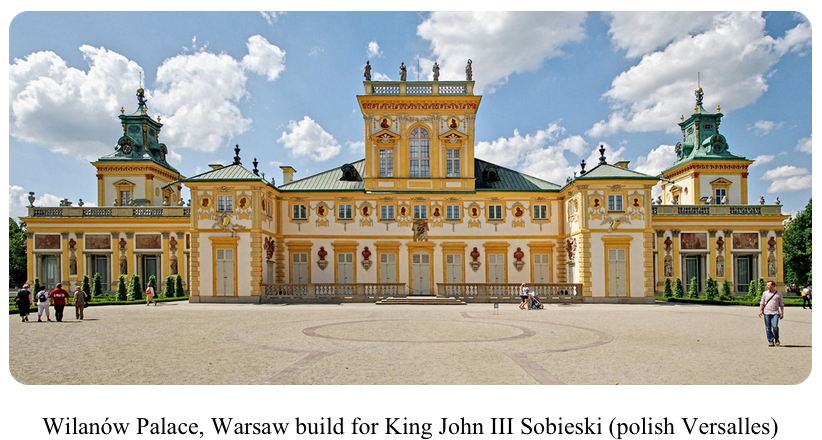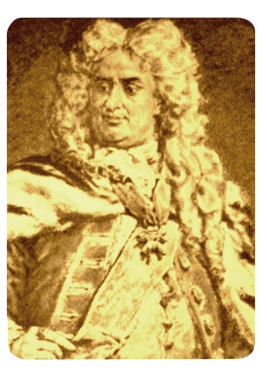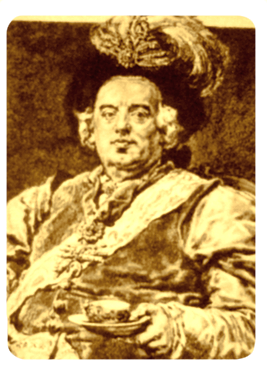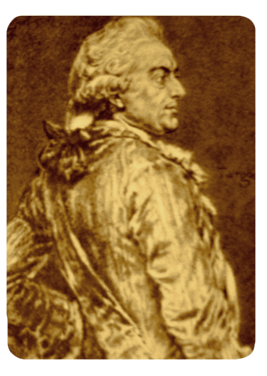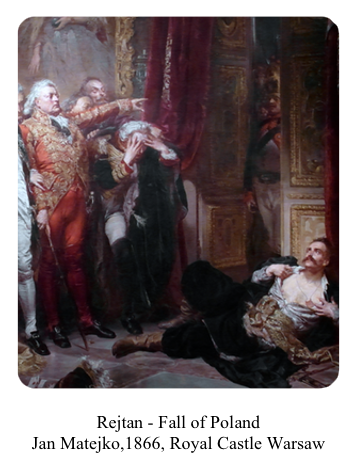Polish prehistory
To discover the mysteries of the past, historians and other scholars studying those domains work with a number of sources, such as various artifacts and structures of non-written cultures, songs and tales, and, recently, also genetic material (DNA). All those sources provide information on lands which became Poland and the people who inhabited them after the retreat of the glaciers from Europe (Last Glacial Maximum - LGM). This is how we know that the Poles are Slavic people who have inhabited Central and Eastern Europe between the Oder and Vistula River for thousands of years. In contrary to what was believed before, modern science allows us to infer that the human settlement in the region has been characterized by genetic continuity of a rather homogenous nature since the Bronze Age. The DNA research suggests as well a link with central Asia, which can be explained by four theories. In this way, the so-called Sarmatian myth which arose in Poland in the 16th century may well turn out to be true.Read more

History of Poland
"Christianity, patriotism and a passionate love of freedom are the dominant trends of the ten centuries of Poland's turbulent history. Few nations have suffered as much, faced so many reversals of fortune and yet retained their ethnic and cultural identity and vigor. Such endurance in the face of adversity inspires confidence in the future of this great nation. Some of those who enjoy freedom – and often take it for granted – may have something to learn from Poland's historical experience".
Read more

THE REALM OF THE PIASTS - Piast dynasty 966 - 1370
Piast dynasty 966 - 1370 Organized Slavic states between the Oder and the Niemen River existed well before 10th century. However, it is the baptism of Poland in 966 that is considered an official beginning of the Polish state. Since that moment, Poland entered the realm of Western Civilization, with Polish identity and the state structure shaped according to the Western model.The Baptism of Poland took place under pressure of dramatic events. In the 10th century the expansion of the Teutonic tribes reached the Polanian territory. Fighting as vassals of the Holy Roman Emperors, the Saxons brought with them Christianity which they imposed with fire and sword. In response, a major ruler of the Western Slavs, the Polanian Duke Mieszko I, decided to accept baptism from the Bohemians, together with a marriage to a Bohemian princess, Dobrawa. In this way not only did he save his lands from bloody crusades from the West but also created a new Christian potential power center in the East of Europe.
Read more

Duke Mieszko I ca. 960 - 992
The Duke of Poland and the first recognized Polish sovereign. Mieszko I was the son of Siemomysl and father to Boleslav the Brave. Having accepted baptism along with his people, Mieszko I became the first Polish Christian duke and created the Polish state within Christendom. Mieszko I employed both diplomatic alliances and the strategic use of force to extend frontiers of his realm. Under his reign, Greater Poland united with Kujavia, Pomerania and Masovia, and subsequently Silesia and Lesser Poland.Read more

King Boleslav the Brave 992-1025
The first crowned Polish king. Boleslav previously reigned as duke of Bohemia (in 1002-1003). He strove to secure Poland's autonomy from the Holy Roman Empire, then dominated by the Germans. Boleslav furthered his father's policy of diplomatic engagement and conquest. A strategist, Boleslav conducted wars against Moravia, Red Ruthenia, Slovakia, Meissen, Lusatia and Bohemia and established forts and bridges for Poland's defense. A statesman, Boleslav mediated central European affairs, promulgated law, and introduced a Polish Archbishopric independent from its predecessor in Magdeburg while also founding new churches.Read more

King Mieszko II Lambert 1025-1031
King of Poland (1025-1031) and Duke of Poland (1032-1034). Mieszko II was renowned for his talent, skill, and education. In both 1028 and 1030, Mieszko II led campaigns against Saxony. Frequently embattled, Mieszko II met a plethora of foes on the field?including German, Bohemian, and Kievan princes. Exiled in 1032, Mieszko II remained abroad for a while only to return to fight his brother, Bezprym. Although Mieszko II reunited Poland, his brother denied him the crown by dispatching it to the German Emperor. Suffering military and political reverses, Poland under Mieszko II lost Lusatia, the center of Red Ruthenia, Moravia and Slovakia.Read more

King Casimir the Restorer 1039- 1058
Duke of Poland and monarch from 1034 until 1058. Casimir the Restorer united Polish territories and reclaimed Masovia, Silesia and Pomerania for Poland. Following arduous debates and litigation, Casimir crafted a new foundation for the Polish state. Casimir moved the capital from Gniezno to Cracow, and founded a new chapel at Wawel to mark the new era. By his careful hand, the rule of law returned and a long, lasting peace ensued.Read more

King Boleslav II the Bold 1076-1079
Duke of Poland (1058-1076) and King of Poland ( 1076-1079). Contemporaries and historians both regard Boleslav II as one of the most talented rulers of the Piast dynasty. Boleslav pioneered a new, Polish coinage to replace the foreign currency previously employed. A patron of the Church, Boleslav II reestablished the Archdiocese of Gniezno and founded the diocese of Plock. For these efforts among others, Boleslav became known as "Szczodry" (the Generous.) Through his magnanimity, new churches, mints in Cracow and Wroclaw, and other cultural and royal facilities appeared on Polish soil. However, an act of sacrilege tainted the reign of Boleslav II in 1079. In a fit of rage, Boleslav drew his sword during a celebration of Holy Mass, approached Bishop Stanisław ze Szczepanowa, and cut him down upon the Cracow altar. Horrified of his sin, Boleslav fled Poland, and spent the rest of his days in search of repentance.Read more

King Vladislav Herman 1079-1102
Duke and overlord of Poland (1081-1102). Vladislav Herman sponsored the foundation of new churches across Poland. Migrating toward Jerusalem, the Jews of Western Europe approached the borders of Vladislav's Poland. In an act of tolerance, Vladislav received the Jewish migrants into Poland in 1096. Throughout his reign, Vladislav retained power over the most important cities of Poland.Read more

King Boleslav III Wrymouth 1107-1138
Duke of Poland (1102-1138). Boleslav III earned his fame through his military campaigns to regain lost Polish territories. His energy and resolve eroded the power of the German Emperor and the King of Bohemia, a key German vassal. With momentum unabated, Boleslav III conquered Pomerania and incorporated Gdansk into the Polish Kingdom. However, Boleslav demonstrated diplomatic tact, building friendly relations with the Kingdoms of Hungary and Kievan Rus?. Fearing fratricidal infighting, Boleslav III issued his famous "Succession Statute", which divided Poland among his sons. Despite his successes, he also made some political errors.Read more


King Boleslav IV the Curly 1146-1173
High Duke of Poland, Duke of Silesia, Duke of Masovia, and Duke of Sandomierz. Thanks to the patronage of the Holy Roman Empire and the Holy See, Boleslav IV quickly acquired the title of Polish High Duke. Loyally serving these pillars of Christendom, Boleslav generously donated to the Church. This magnanimity led to the foundation of churches and colleges in Wroclaw and other Polish cities. Upon the fall of Vladislav II, Boleslav IV seized the scepter of power. Yet German power planted the seeds for his undoing. Diplomacy yielded to armed conflict, and the nephew of Frederick Barbarossa, Conrad II, commanded his legions eastward. On the battlefield, the earlier recognition of the Holy Roman Empire and the Holy See could not spare Boleslav IV from defeat. Imposing the peace, Conrad II dictated shameful terms and compelled Boleslav IV to accept the title of "Vassal of the Empire". All the while, the brothers of Boleslav IV fell upon him in intrigue and even open rebellion. Altogether, the German peace and the fratricidal strife accelerated Poland's political fragmentation.Read more

King Mieszko III the Old 1173- 1202
High Duke of Poland (r. 1173-1202), Duke of Greater Poland. Mieszko III beheld the face of battle early on when he first became the Duke of Greater Poland. At the time, Vladislav II ordered a campaign against him and his brother, Boleslav IV. Surviving the attacks of Vladislav II, Mieszko III united with German crusaders and departed as a member of the Northern Wendish Crusade against the Polabian Slavs in 1147. Astutely reading the tides of politics, Mieszko III leveraged his influence to protect Polish interests in the Sprenave region. In 1173, Mieszko III benefited from the Seniorate rule and became a High Duke of Poland. Mieszko III realized that the politics of marriage could rival and surpass the spoils of war. Marrying off his daughters, Mieszko III ensured Polish sovereignty and stability in the Pomeranian duchy. Yet when all else failed, Mieszko III would don the garb of war as he did against Vladislav II - even against defiant relatives and his own rebellious son, Odon. Due to his turbulent world, Mieszko III ruled from the saddle more than the council room.Read more

King Vladislav III the Spindleshanks 1202-1229
High Duke of Poland (1202-1206 and 1227-1229), Duke of Greater Poland. Ascending to power, Vladislav III became embroiled in conflict with his relatives over Seniorate rule. Leszek the White?the son of Casimir II the Just "occasioned the first confrontation by contesting Vladislav III's rule in Cracow. For a time, the mighty voivode Mikolaj Gryffita supported the right of Vladislav III to Cracow. However, Gryffita's shield crumbled with the warlord's death in 1206. Politically disarmed, Vladislav III wavered, and Leszek the White pressed his advantage. With the support of Cracow's disgruntled nobles and the Pomeranians, Leszek the White abolished the rule of Wladysalw III in Cracow. Routed, Vladislav III reorganized in order to parry the political and territorial ambitions of Vladislav Odonic. Yet as Vladislav III departed, Cracow's nobility began to regret abandoning their former sovereign. Basking in his triumph, Leszek the White travelled to the Congress of Gasawa, yet he did not suspect the treachery of his erstwhile Pomeranian allies. Launching a surprise attack, the Pomeranian forces slew Leszek the White, leaving Cracow leaderless.Read more

King Boleslav the Chaste 1243-1279
High Duke of Poland (r. 1243-1279), Duke of Sandomierz, son of Leszek the White and the last of the Piasts of Lesser Poland. But a child, Boleslav tasted political oppression when Konrad I of Masovia imprisoned both he and his mother. The darkness of the prison cell soon reflected the darkness over the land when the Mongol horde charged over the horizon. In 1241, the knights of Christendom met the Mongol invaders outside of Legnica, but like so many others, the knights fell beneath the Mongol hooves. Escaping with his mother and wife, Boleslav took refuge in Hungary, returning to Poland only as an adult. Never forgetting his childhood imprisonment, Boleslav fought against Konrad I from Hungary, and devoted his energies in support Boleslav the Pious. Despite external calamities, Boleslav refused to neglect internal priorities: under his watchful eye, the urban centers grew, the Church enjoyed political and financial support, and he reformed the salt mines. Many remember him for his efforts to ensure the canonization of Bishop Stanislaw of Szczepanow.Read more

King Przemysl II 1295 - 1296
King of Poland (1295-1296), Duke of Poznan, Cracow and Gdansk. After many languid years, Poland regained its status as a kingdom under the reign of Przemysl II. However, Przemysl II traversed a jagged, treacherous road to the throne. Both Henry IV Probus and Vladislav the Elbow-high coveted Cracow?s throne. Despite the competition, Przemysl II advanced undeterred and in tandem with Archbishop Jakub Swinka, Przemysl II sought to reunify the Polish lands. To his chagrin, the powerful Przemyslid dynasty pressured him mercilessly. With no avenues of escape, Przemysl II yielded the Cracow throne to the pretender Wenceslaus II of Bohemia. In defiance, Przemysl II united with Vladislav the Elbow-high and Casimir II of Leczyca in 1293. Their triumvirate vowed to struggle against Bohemians until the recovery of Cracow. In the year 1295, Przemysl II reached the pinnacle: the pretender dethroned, Archbishop Swinka crowned Przemysl II King of Poland and the newly inherited Pomerelia. Alas, circumstance and conspiracy deprived Przemysl II of a peaceful reign.Read more

King Vladislav the Elbow-high 1320-1333
King of Poland (r. 1320-1333). Thanks to the efforts of Vladislav the Elbow-high, Poland at last reunited. A statesman par-excellence, Vladislav inspired his men on the battlefield, judiciously administered his lands, and navigated hazardous diplomatic waters. Vladislav secured his throne in 1320 after routing the Przemyslid Bohemian dynasty, then ruled by John of Luxembourg. With the Przemyslids defeated, Vladislav girded himself to face a long insurmountable foe: the Teutonic order. Receiving an invitation from Konrad of Masovia, the Teutonic Order had arrived in 1226 and had ensconced itself in Polish lands. After meticulous preparation, Vladislav and his army defeated the Teutonic Order in the Battle of Plowce in 1331. Having defeated rival powers, Vladislav attended to reform. Under his reign, the Kingdom of Poland received a unified legal code.Read more

King Casimir III the Great 1333-1370
King of Poland (1333-1370). Casimir III presided over the end of the Piast dynasty, but he nonetheless established himself as a talented and renowned Polish king. Building upon his father's reforms, Casimir III reformed the army, doubled the extent of the Polish frontier, established first Polish University in Cracow (1364), reformed legal system, and oversaw the explosion of newly founded cities, castles, and towns. Even as he expanded Poland, Casimir III loyally retained the guarantees of his father to Polish Jews. Under Casimir III, the Jewish communities not only continued to enjoy their former privileges, but watched as Casimir III supported Jewish settlement in Poland. Tragedy struck when Casimir III departed on a hunting expedition. Severely injured during the hunt, Casimir III met an untimely end. With no male heirs, the laws of succession dictated that Luis I of Hungary receive the crown. As the result of this succession, the first personal Union between Poland and Hungary emerged.Read more

King Luis I of Hungary 1370-1382
King of Hungary, Croatia and Poland (1370-1382). A distant, distracted monarch, Luis I attended to his subjects in Hungary more than his newly acquired Polish ones. Inevitably, Luis I engendered great feelings of consternation and bitterness among the Poles. Defying his obligation to his godfather Casimir III, Luis I refused to recover the Polish lands of Silesia, Pomerania, and Masovia. Pondering the status of his progeny, Luis I hoped to transfer the privilege of succession to his descendant daughters. To ensure this, Luis I introduced Privilege of Koszyce in 1374. Through the agreement, the Polish nobility bestowed the right of succession to the king's daughter Hedwig. In return, Luis I released the nobility from a number of financial, military, and infrastructural burdens. The Privilege virtually abolished tribute to the monarch, excepting a small duty on individual fields. Regarding defense, the nobility no longer carried the obligation to build and maintain castles in the West nor the expectation to pay the wages for soldiers. Finally, the nobility no longer bore the burden for the construction of towns and bridges as well as for preparations for the court's travel expenses within the kingdom.Read more

Queen Hedwig d'Anjou 1384- 1399
First female King of Poland (1384-1399) and later a Saint of Roman Catholic Church (canonized in 1997). At the beginning of her reign, Hedwig faced the prospect of marriage at every turn. Asserting their authority, the Polish nobility from Lesser Poland refused the pre-arranged marriage with Wilhelm of the Habsburgs. Instead, Hedwig offered her hand to Vladislav of the Lithuanian House of Jogaila. To marry Hedwig, Vladislav Jogaila signed the Union of Krewo. The Union obligated him to Christian baptism and the subsequent conversion of Lithuania to the Christian faith. In 1386, Vladislav Jogaila married Hedwig and received a crown, yet Hedwig maintained her title as King of Poland. Hedwig stands out as one of the most unique sovereigns of the medieval world. A woman amidst a world dominated by men, Hedwig exhibited an aptitude for negotiation and strategy that rivalled her predecessors and contemporaries. All the while, her husband Vladislav strictly cooperated with her. Expanding the kingdom, Hedwig marches with the Polish army to Ruthenia and then persuaded Ruthenian people to become subjects of Polish crown.Read more

THE JAGIELLONIAN REALM 1386-1573
The successor of the last Polish Piast king was Hedwig d'Anjou, his grandniece. Her marriage to the Lithuania's Grand Duke Yogaila (Jagiełło) in 1386 marks the beginning of the Jagiellonian rule in Poland. Hedvig D'Anjou was crowned the king of Poland and Yogaila was crowned as her consort. Their marriage meant a political and military alliance against a common foe of Poland and Lithuania, the Teutonic Knights. Although almost three times younger than Yogaila, Hedvig took active part in government, strengthening Poland and undermining the position of the Teutonic Order in that part of Europe. After Hedvig d'Anjou died in childbirth in 1399, Yogaila negotiated with the Polish nobles the prolongation of his term as a king of Poland. Ultimately, he started the next dynasty of Polish kings, the Dynasty of Jagiellons. The integration process was accelerated by the last Jagiellonian king, Sigismund Augustus. Realizing that he would die issueless, the monarch decided that only a federal union between the two realms would make the system permanent.Read more

King Vladislav II Jagiello 1386 - 1434
King of Poland (1386-1399 alongside Hedwig, 1399-1434 as sole King), and Grand Duke of Lithuania (1377-1434). Thanks to marriage with Hedwig, Vladislav II accepted the Christian faith and inherited one of the most powerful Kingdoms of the high middle ages. Emulating him, Lithuania converted to Christianity, thereby founding the Polish- Lithuanian Union which would endure until 1795. Other than Vladislav the Elbow-high, Vladislav II accrued fame as one of the only monarchs to openly confront and defeat the Teutonic Order. Vladislav II's victory at the Battle of Grunwald in 1410 enabled him to procure the Thorn Peace Treaty, which stabilized the Polish-Lithuanian borders. Moving beyond the shadow of war, Vladislav II inaugurated Polands "Golden Age". Following the trend of Luis I, Vladislav II granted more privileges to the Polish nobility.Read more

King Vladislav III 1434-1444
King of Poland (1434-1444), Hungary and Croatia ( 1440-1444). Dismissed as young and immature, Vladislav III did not inspire respect from the Polish nobility. As a result, Vladislav III reigned in the shadow of the powerful chancellor Olesnicki. Yet Olesnicki?s shadow did not relegate Vladislav III to obscurity. In 1440, the Kingdom of Hungary offered Vladislav III the crown. The Polish nobility objected, but Vladislav III accepted, thereby provoking a two year conflict with the opposing claimant, Queen Elisabeth from Hungary. Impressed with the young ruler, Pope Eugene IV endorsed the claim of Vladislav III, granting the support of the Papacy. Aligned against Vladislav III and the pope, Queen Elisabeth collapsed in defeat and reign of Vladislav III touched the shores of the Baltic, Black and Adriatic Seas. Alas, peace eluded Vladislav III: he consolidated his kingdom only to witness Turkish sabers menace Christendom.Read more

King Casimir IV Jagiellon 1444-1492
King of Poland (1444-1492) and Grand Duke of Lithuania (1440- 1492), recipient of the English Order of Garter (KG). Born the youngest son of Vladislav II Jagiello, Casimir IV grew alongside the burgeoning Polish-Lithuanian Commonwealth. To the bafflement of the Polish nobility, the Lithuanian nobility proclaimed Casimir IV Grand Duke of Lithuania after the sudden death of Sigismund Kestutaitis in 1440. The Lithuanian decision bore political fruits. Casimir IV bestowed upon the Lithanian nobility the rights his father had to the Polish. All the while, Casimir IV tended to Lithuania?s national spirit: he promised that no Pole would receive a Lithuanian office and vowed to protect the borders of both nations. Having molded his governing abilities as a Lithuanian Duke, Casimir IV received the Polish throne after a three-year interregnum. In interstate affairs, Casimir IV proved his mettle against the Teutonic Order. Casimir IV crafted an alliance with the Order, but once more conflict proved inevitable, resulting in the Thirteen Years War.Read more

King John I Albert 1492 - 1501
King of Poland (1492- 1501). Young, bold, and but a prince, John I distinguished himself at the Battle of Kopersztyn in 1487, where he routed an opposing Tartar force. Alas, John I fared not as well against the Hungarians. In 1490, the Hungarian nobility proclaimed him King of Hungary, and John I departed to accept the offered crown. Yet, King Vladislaus II would frustrate the young prince. Their armies clashed, and Vladislaus II defeated the hero of Kopersztyn. While Hungary eluded him, Poland embraced John I. Supported by the Archbishops of Gniezno and Cracow and his brother Fredrich, John I was crowned Polish king in 1492. Although this new authority came with a cost: the Polish nobility obligated John I to devolve more prerogatives to them and away from the crown. To the great delight of the nobility, John I signed the Privilege of Piotrkow in 1496. The privilege declared that only nobles held the right to buy and sell properties. Talk of privileges occupied a secondary place in the consciousness of John I. A protector and champion of Christendom, John I yearned to lead a crusade against the Ottoman invaders and defeat them as he routed the Tartars a decade earlier.Read more

King Alexander I Jagiellon 1501 - 1506
Grand Duke of Lithuania (r. 1492-1506) and King of Poland (r. 1501-1506). Born the heir of Casimir IV Jagiellon. Alexander I granted the Polish Senate the Privilege of Legislative Initiative in 1501 in Milnik and the Nihil Novi Constitution. From henceforth, every new right introduced required the consent of the Szlachta. Unfortunately, a lack of strategic vision inhibited Alexander I as a statesman. When the Teutonic Order, Tsar Ivan III, and the Tartars united against him, the onslaught proved too much too bear.Read more

King Sigismund I the Old 1507 - 1548
King of Poland and Grand Duke of Lithuania (1507- 1548). The life of Sigismund I is one of vaunted successes. The first achievement came in 1525 when Albert von Hohenzollern bent the knee. Upon receiving homage from Albert, Sigismund I gained suzerainty over Ducal Prussia. Not only Albert recognized the ability and grace of Sigismund I, the subjects of Silesia recognized the king as Duke and enabled him to incorporate Masovia into Polish kingdom in 1529. Territorial ambition did not subvert the taste of Sigismund I for all things sublime and lofty. Encouraged by his wife Bona of the Italian House of Sforza, Sigismund I became a great patron of culture and the arts, and renowned Italian artists accepted his invitations to Poland. Yet to protect Poland's flowering culture, Sigismund I accepted the call to battle. Under his command, Polish armies defeated both Moldavians and Muscovites in respectively 1531 and 1535. The domestic field posed obstacles to Sigismund I, but did not waver in his efforts to secure reform and prosperity.Read more

King Sigismund II Augustus 1548 - 1572
King of Poland and Grand Duke of Lithuania (1548-1572). The sun set on the Jagiellonian kings once Sigismund II passed from the mortal world, but the Polish elective monarchy through Union of Lublin endeared him to memory. In 1569, the Union of Lublin laid the cornerstone of the Polish-Lithuanian Commonwealth. Confident and unbowed, Sigismund II strengthened the new Commonwealth by absorbing Livonia after the Knights of the Sword Order collapsed and by establishing a strategic alliance with the Habsburgs. With a gentle smile and sleek tongue, Sigismund II knew how to the win hearts, minds, and coin of the Polish Nobility. Carrying a deep appreciation for architecture, Sigismund II aided the foundation or restoration of Wawel, Warsaw Royal Castle, Vilnius Castle, and Niepolomice Castle. Further embodying the Renaissance spirit, Sigismund II collected exquisite jewels and fine art.Read more

ELECTIVE MONARCHY 1573-1795 Polish-Lithuanian Commonwealth
Nation and Society, 15-18th CenturiesThe nobles in the Commonwealth were the political nation. They co-existed with other social groups, which altogether outnumbered them probably 1 to 10. Peasants constituted the majority of the population. They were usually Catholic or Orthodox. Until the late 16th century village commune was the basis for the local, limited self-government. Rustic elders ran their community affairs, turning to either the priest or the lord to decide on more complicated issues. In the 17th century, the increase of demand for Polish grain resulted in the rise of preference for serfdom over rent farming by the peasants. Nonetheless, despite restrictions on movement of the peasants, many of them avoided control and either travelled seasonally or fled to settle in the eastern borderlands. Those who remained in serfdom, especially in small and medium estates, could rely on a fairly personalized relationship with the land-owner or his farm manager.
Read more

King Henry Valois 1573-1575
King of Poland and Grand Duke of Lithuania ( 1573-1575), King of France (1574-1589). After many years of constitutional changes, the Commonwealth awed the European world by freely electing their monarch; an achievement never before demonstrated in the history of Poland. However, the nomination and election of Henry de Valois provoked controversy. The Polish nobility balked at the cultural differences between the French king and themselves, nor did Henry de Valois remain content with his elected throne. When the French throne beckoned, Henry Valois furtively departed the Commonwealth. However, Polish culture left a deep imprint on Henry de Valois: having witnessed both a fork and a toilet, he fixedly determined that France should not go without! Nonetheless, Henry de Valois fixed his name to Henry's Articles: the Pacta Conventa and the Warsaw Confederation. The former established constitutions to regulate legal system within the Commonwealth; the latter guaranteed religious freedom to all.Read more

Queen Anna Jagiellon 1575 - 1586
King of Poland and Grand Duchy of Lithuania by her own right from 1575 to 1586. With the abdication of Henry de Valois, the Polish nobility elected Anna Jagiellon and her fiancé Stephan Bathory as co-rulers in the 1576 election. Dividing the obligations of the realm, Anna conducted internal affairs and administration; Stephan Bathory oversaw military campaigns and questions of foreign affairs. Later in life, the reins of power lay before her. Yet Anna sacrificed the opportunity. Instead, Anna promoted young Sigismund III of the Swedish House of Vasa as heir to the Polish crown.Read more

King Stephen Bathory 1576-1586
King of Poland and Grand Duke of Lithuania, Prince of Transylvania (1576-1586). Despite his short decade in power, Stephen Bathory proved a model of judicious governance. Two phases defined the reign of Stephen Bathory: the contest with Maximilian and his tenure afterwards. Maximilian ruled as Holy Roman Emperor to the west and had set his sights upon the Commonwealth. As imperial hand grasped for Polish lands, rebellion erupted, destabilizing the domestic sphere. Although Stephen Bathory did not reign without friends. Aided by the talented Chancellor Jan Zamoyski, Stephen Bathory faced down Maximilian and brought order to the Commonwealth. His authority consolidated, Bathory entered the second phase of his reign, reforming the Commonwealth?s institutions and protecting her people. Administratively, Bathory reorganized Judical system and procured Sejm approval for additional taxes for a more permanent army: Piechota Wybraniecka'a peasant infantry formation. Not neglecting his Lithuanian subjects, Bathory founded the University of Vilnius.Read more

King Sigismund III Vasa 1587-1632
King of Poland and Grand Duke of Lithuania (1587-1632) and King of Sweden (1592-1599). Despite receiving the Polish throne, Sigismund III yearned for what he had lost and for what he had yet to gain. His first major foreign expedition transpired against his old home: Sweden. In 1599, Sigismund III?s revolting subjects deposed him from the Swedish throne; Sigismund III vowed this would not stand and invaded. Despite initial military success, Sigismund III never reversed his deposition?the failure sowed the seeds for future Polish-Swedish animosity. Thwarted, Sigismund III glanced toward Muscovy and perceived chaos, pretenders, and rebellion?the Time of Troubles. In 1610-12, Sigismund III invaded to stem the chaos and eliminate Muscovy as a rival once and for all; he would place his son on the Muscovite throne. Having captured Moscow and Smolensk, Sigismund III believed he had triumphed, but faced with insurrection, the campaign ultimately failed. Between 1617-1621, the Ottoman threat summoned Sigismund III and his forces to Moldova, alas this left his northern flank exposed.Read more

King Vladislav IV Vasa 1632-1648
King of Poland and Grand Duke of Lithuania (1632-1648), and Tsar of All-Russia (1610-1613). Vladislav IV earned the respect and admiration of his subjects for his meticulous care ensuring the security and prosperity of the Commonwealth. To the west, Vladislav IV regained the costal territories from Sweden by signing peace treaty in Sztumska Wies in 1635. All the while, Vladislav IV sought to strengthen Poland?s ties with the Hapsburgs. To the east, Muscovite and Ottoman legions threatened the security of the Commonwealth. Although the Ottoman hand began to sicken and break before the armies of Vladislav IV; the Muscovite hand grew stronger and bolder. The new Romanov dynasty had not forgotten when Waldislaw IV sat upon the Tsarist throne; they certainly had not forgotten that he still possessed Smolensk. The Muscovite forces besieged Smolensk, but Vladislav IV led the Commonwealth forces to relieve the beleaguered city. The victory did not procure absolute security: throughout the European world, military reform and innovation raised Europe's status, yet created a political tapestry ever more dangerous.Read more

King Michael I Wisniowiecki 1669-1673
King of Poland and Grand Duke of Lithuania (1669-1673). Crippled and broken, the Commonwealth suffered further during the reign of Michael I. The new sovereign served as little more than a political doll, yanked back and forth between the courts of Hapsburgs and Bourbons. Eventually the Hapsburgs won possession of Michael I, but this by no means rescued the gaunt, ailing body of the Commonwealth. Ill but not exhausted, the Turks fell upon the poor Michael I, eager to seize a piece of the Ukrainian territory from the Commonwealth.Read more

King John III Sobieski 1674-1696
King of Poland and Grand Duke of Lithuania (1674-1696). John III inherited the Commonwealth in chaos, but this would not intimidate him. Widely reputed as the last successful Polish king, John III was a patron of Polish culture, a skillful strategist and endowed with great political foresight. Inaugurating the Sobieski dynasty, John III envisioned a unique European role in the world, a world in which a reformed Poland would serve as a leader and exemplar. In particular, the vision of John III meant saving European Christendom from Islamic invaders once and for all. The first campaign of 1674 and 1675 restored flagging morale in the Commonwealth by defeating the Turkish-Tartar coalition to the south. Since the defeat of Michale I, Turkish and Tartar armies held southern Polish cities and the Commonwealth's southernmost reaches imprisoned. Rallying his men, John III campaigned against the occupiers ferociously and by the end of the campaign, the south rejoined the Commonwealth in liberty. But a few years later, fearsome words emanated from Vienna: the Ottoman horde marches once more. Answering the call, John III rode to the aid of Vienna, once more besieged.Read more


King August II the Strong 1697-1733
Elector of Saxony (1694-1733), King of Poland and the Grand Duke of Lithuania (1697-1733). August II became founded the House Wettin on the Polish throne. Known for his incredible strength, the Polish nobility hoped he would prove an equally strong sovereign. At first, August II showed great promise: he had converted to Catholicism to share communion with his new subjects, continued his generous support for artists, vanquished the Turks from Kamieniec Podolski in 1699, and introduced the Order of the White Eagle. Yet, August II failed to emulate the grandeur of John III Sobieski and failures plagued his reign. Not averse to bribery, August II enriched amenable Polish magnates to support his interests?even at the expense of the Commonwealth. Most notably, August II yearned to topple Swedish power by aligning with Tsar and future Russian Emperor Peter the Great. To achieve this, August II entered into the Great Northern War alongside Russians, Danes, and Prussians. However, the brash August II underestimated his Swedish antagonist: the new king Charles XII.Read more

King Stanislaw I Leszczynski 1706-1736
King of Poland, Grand Duke of Lithuania (1706-1709; 1733-1736), Duke of Lorraine and Count of the Holy Roman Empire. A protégé of Swedish king Charles XII of Sweden, Stanislaw I owed his throne to the initial victories of the Swedish forces in 1706-1709. With the major Russian victory at Poltava, Sweden retreated and left Stanislaw I with neither friends nor a patron. Determined to survive, Stanislaw I fled after the Swedes, but awaited a new opportunity to return to the Commonwealth. Augustus II died in 1733 and Stanislaw I seized the moment. With French political support, Stanislaw I returned to the Polish throne, but he remained but a pawn to the ever-growing empires of Europe. Aghast at the prospect of a Swedish-French alliance, the Austrian and Russian Empires flagrantly intervened in Polish domestic affairs and deposed Stanislaw I. Caught between giants, the Polish Sejm yielded and agreed to elect Frederick Augustus II as the new Polish king. The Sejm pliant, the Peace of Vienna in 1738 legitimized the deposition of Stanislaw I and the installation of Frederick Augustus II, crowned Augustus III.Read more

King Augustus III 1734-1763
King of Poland and Grand Duke of Lithuania (1734-1763), Elector of Saxony. Emulating his father, Augustus III joined Roman Catholic Church in 1712. Alas, Augustus III then fatally emulated his father in another way: involving the Commonwealth in international conflicts. Abusing his royal prerogative, Augustus III foisted the chaos of the Austrian succession onto the Polish nobles and military. In both the War of the Austrian Succession (1742) and the Seven Years War (1756), Augustus III clung to the side of Austria, expending Polish lives and arms with scant strategic gain to the Commonwealth. Preferring his Saxon lands, Augustus III rarely visited the Commonwealth in person and the Czartoryski and Poniatowski magnate families expanded their influence at the expense of the Polish crown. Menacingly, the Commonwealth?s old Muscovite nemesis had completely evolved into the Russian Empire, abetted by a German princess from Anhalt-Zerbst: Catherine the Great. Catherine the Great felt no compunction to respect the sovereignty of Augustus III, and her envoys manipulated and molded politics in the ailing Commonwealth.Read more

King Stanislaw II Augustus Poniatowski 1764-1795
Last King of Poland and Grand Duke of Lithuania (1764-1795). The Polish-Lithuanian Commonwealth needed a miracle, but she received Stanislaw II - one of the most controversial rulers in Polish history. Indisputably, Stanislaw II harbored honest intentions, for he desperately wanted the Polish Lazarus to walk out of his tomb. Yet, Stanislaw II had neither the character nor the virtue essential to such an audacious political resurrection. Preferring the court culture of the times, Stanislaw II was erudite, cultured, and transfixed by the Enlightenment. This upbringing endeared him to Catherine the Great, and Stanislaw II shared her bed as a lover, yet Catherine's bed was not the place to conceive a Polish resurrection. Entranced, Stanislaw II lay helpless as his beloved schemed to partition his homeland. Nonetheless, Stanislaw II invested what meager effort remained to preserve Polish vital heritage and futilely reform the Commonwealth. During his reign, the first European constitution came into existence, the Constitution of 3 May in 1793 - the second in the world!Read more

THE PARTITIONS 1795-1918
The partitions lasted 123 years adding new elements to the Polish identity, depending on the conditions dictated by a given partitioning power. Although the customs of the Commonwealth were preserved on large noble estates, the old noble political nation lost its rights and, gradually, its economic standing. What endured was their sense of obligation to serve. Other strata of society inhabiting former Commonwealth lands were gradually gaining their separate national identity. Unless they assimilated in the Polish culture, their nascent identity was predicated on a radical break with the past. With regards to political and economic life, Poles were reacting to the policies of the partitioners, which led to the cycles of liberalization and repression occurring periodically in all parts of subjugated Commonwealth. In general, all Poles agreed about the necessity of the restoration of the Commonwealth. They disagreed, however, on the means that were supposed to lead to it. Three approaches can be enumerated here: armed struggle as the only way to freedom, evolutionary road to freedom, which did not exclude ultimate armed confrontation, and tri-loyalism, subservient cooperation with each of the partitioning powers.Read more

THE OLD-NEW COMMONWEALTH: RESSURRECTION 1914-1921
In 1918 the Commonwealth was restored albeit within changed borders. They extended farther in the south to include Silesia, but much of the former Grand Duchy of Lithuania in the east had been irrevocably lost. The Poles named their state the Polish Commonwealth (Rzeczpospolita Polska). The name signified continuity with past ideals, acknowledged new conditions of the modern era and the Polish ethnos, which had been responsible for Poland's resurrection. Nevertheless, the new commonwealth inherited diversified ethnic structure of the old one, which in the modern era tainted with totalitarianism was bound to result in certain difficulties.Read more

THE OLD NEW COMMONWEALTH: INTERWAR 1918-1939
In 1918 the Commonwealth was restored albeit within changed borders. They extended farther in the south to include Silesia, but much of the former Grand Duchy of Lithuania in the east had been irrevocably lost. The Poles named their state the Polish Commonwealth (Rzeczpospolita Polska). The name signified continuity with past ideals, acknowledged new conditions of the modern era and the Polish ethnos, which had been responsible for Poland's resurrection. Nevertheless, the new commonwealth inherited diversified ethnic structure of the old one, which in the modern era tainted with totalitarianism was bound to result in certain difficulties.Read more

Resources
Timeline Inspiration / Idea - Lady Blanka RosenstielText: historic content - Prof. Marek Chodakiewicz
Design - Ewa Mitera
Images sources:
- Paintings of All Kings: Fellowship of the Kings and Princes of Poland author painter Jan Matejko (artist biography https://en.wikipedia.org/wiki/Jan_Matejko )
- Prehistory photo fot. G. Solecki/A. Piętak ( https://muzeum.szczecin.pl/zbiory/archeologia/epoka-brazu.html )
- Jagielonian coat of arms http://orzelbialy.edu.pl/czesc-3/ and http://www.wladcy.myslenice.net.pl/
- Piast coat of arms https://encyklopedia.pwn.pl/haslo/Orzel-Bialy;3952080.html
- Józef Piłsudski, Ignacy Paderewski images wikipedia.com
- Polish history map image wikipedia.com
Read more

